Welcome back to another SurThrival Thursday from Cheat Mountain! I realize my posts lately have been heavy on foraging, but there is a reason behind this. Thriving in the wilderness is all about living in season, and spring is the season for eating in the forest. It’s the time when every animal finds reprieve from winter’s monotony of stored food, stored fat, or plain starvation. All living things are soaking up nutrients and sunlight and preparing to reproduce or raise this year’s young that were birthed during winter. It only makes sense that it is also time for us humans to eat and grow, reveling in the fresh bounty that the forest provides us during this season. Therefore I feel compelled to say that I cannot let a spring pass by without ranting and raving about some curious little fungi that are near and dear to my heart: morels.
Each spring as the rains come and the night temperatures rise, you can expect to begin seeing small, pocked black heads emerging from the ground. The first members of the Morchella genus to cautiously emerge are usually the Black Morels. A few weeks or even a few days later other members of this family will fruit from the earth as well. Yellows, Whites, Tulips, Half-Frees are some of the species you might have the privilege to sample each spring alongside your wild greens and flowers.
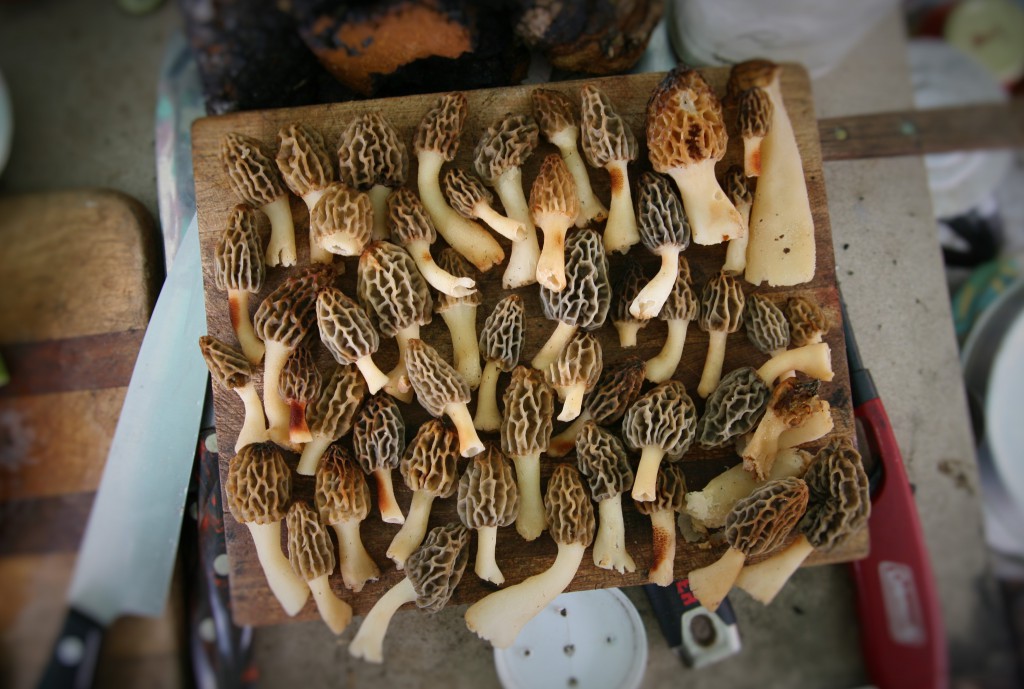
To an amateur hunter these mushrooms may seem inexplicable; some years they seem impossible to find and maybe totally absent, and others they are so prolific they might even be growing in your parking spot! If you seek advice on how to capture these elusive morsels, you will be opening your ears to rumors abound. These will be touted as absolute rules concerning the habits and preferences of the morels. I am here to say that they are absolutely not! You might hear they prefer a certain slope orientation, particular species of tree, a certain night time temperature for a certain period of time, a certain soil pH, etc. All of these should be heard, but with a grain of salt.
Here are three rules for finding morels that I know to be true: morels grow in the woods, morels need temperatures above freezing, and they need rain, and lots of it.
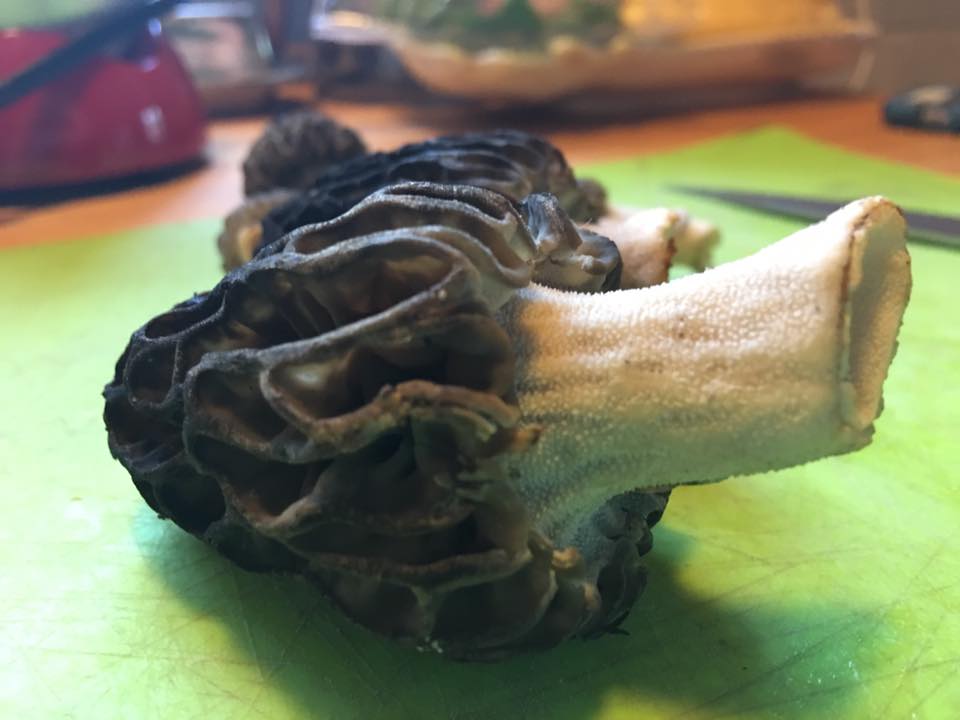
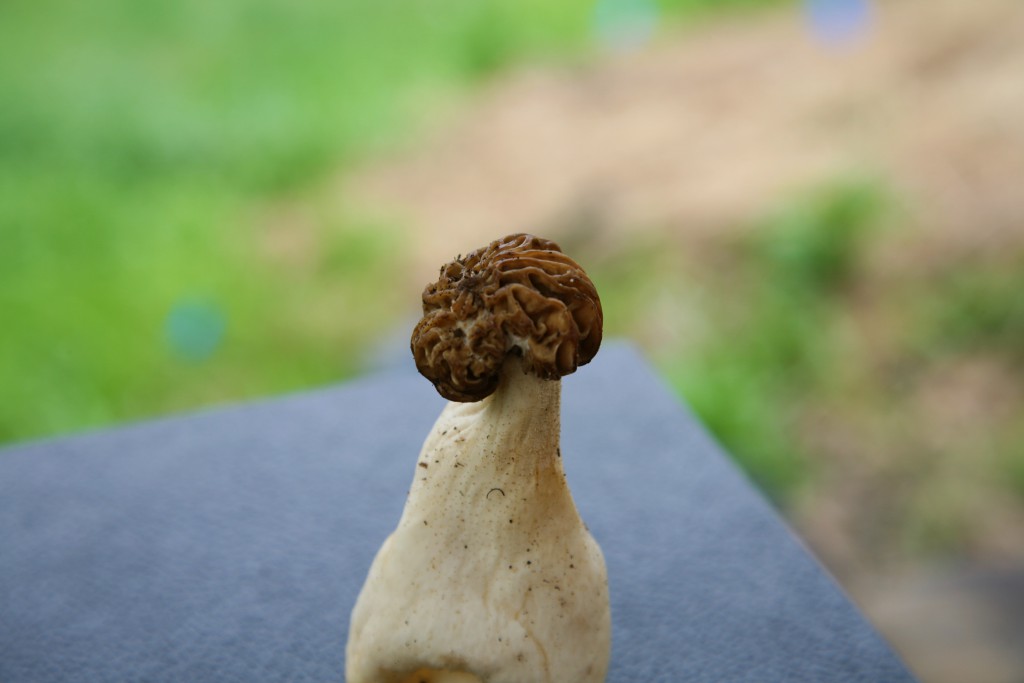
To address the first, morels need trees to grow: they are one of the fungi considered mycorrhizal, meaning that they live in symbiosis with certain plant species around them. Generally this means that the mycelium of the fungus (the majority of the organism which resembles stringy roots) grows intertwined with the roots of its host plant, and both mutually benefit from the relationship by sharing nutrients. As far as we know, morels have been documented to grow in this way with over 20 species of trees and two types of smaller plants. So yes, when someone tells you that morels grow under apple trees, this is true; however it is also true that you might find them under poplar or elm or maple or ash.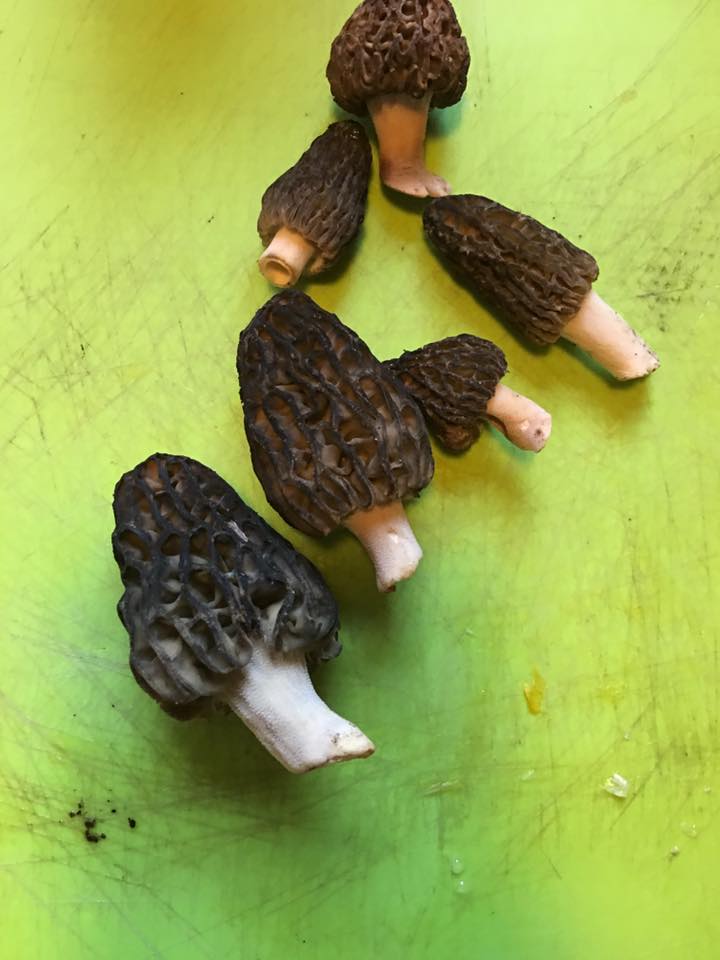
Morels need temperatures above freezing. Morels grow in the spring, and temperature is one of the factors that signify to the fungus that it is time to grow and reproduce. Most cultivators of morels have found that the soil temperature usually needs to be close to 50 degrees before the fungus will fruit. Black morels seem tolerate lower temperatures than this, but usually won’t fruit if it’s often 32 degrees or below.
Morels need rain, fungi thrive on water. If it doesn’t rain, the mycelium will lie dormant until the soil reaches proper moisture content for growth. Whether it’s one day of rain or a week of rain depends on how wet the winter has been, how humid the air is, and how well the particular soil type retains water.
With that, here is my personal advice with no scientific backing, on how to find morel mushrooms. Keep an eye out for Ash, Elm, and Poplar trees. Pay special attention in areas of the forest that have recently burned. Wait to hunt them until after night temperatures have stayed above 45 degrees for a few days, and it has rained for a few days. Pay special attention to areas with more basic soil, particularly those with limestone outcroppings. Squat often to gain a different perspective; one in which you are more likely to see those little camouflaged heads. Have fun.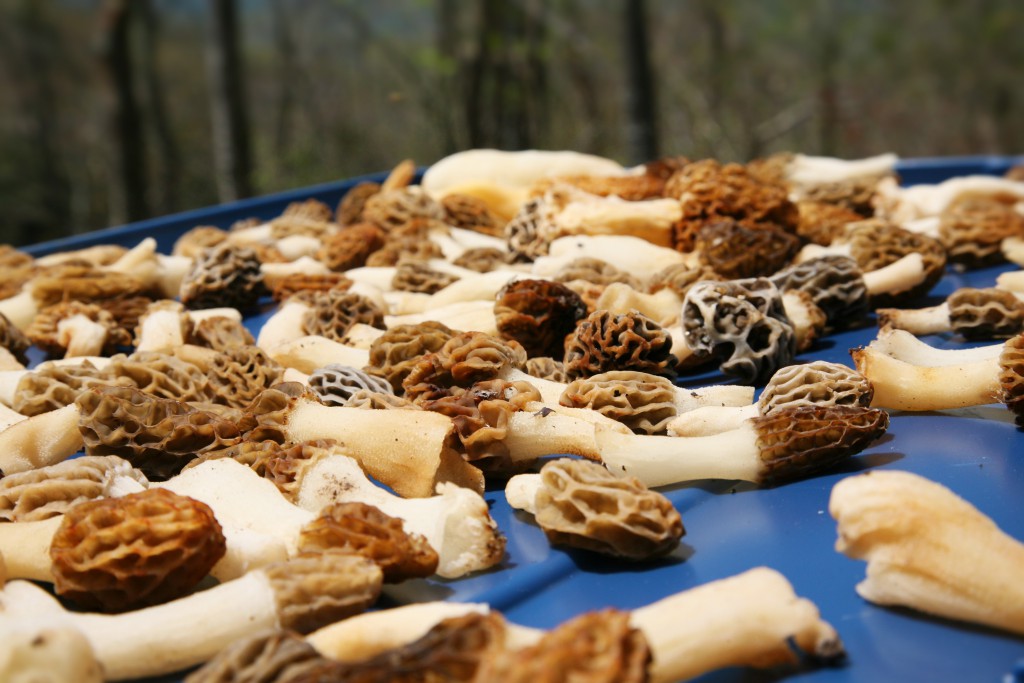
Good luck to all aspiring mushroom hunters and don’t forget to sign up for summer courses and consider coming (or sending your kids) to Cheat Mountain in June!


Comments are closed.